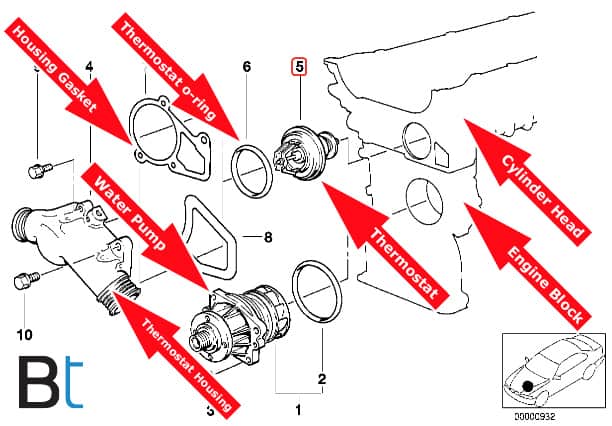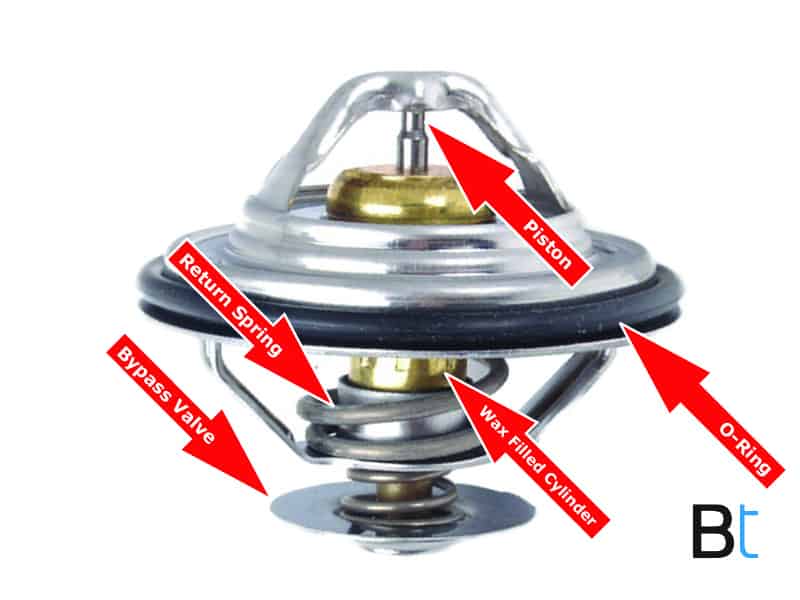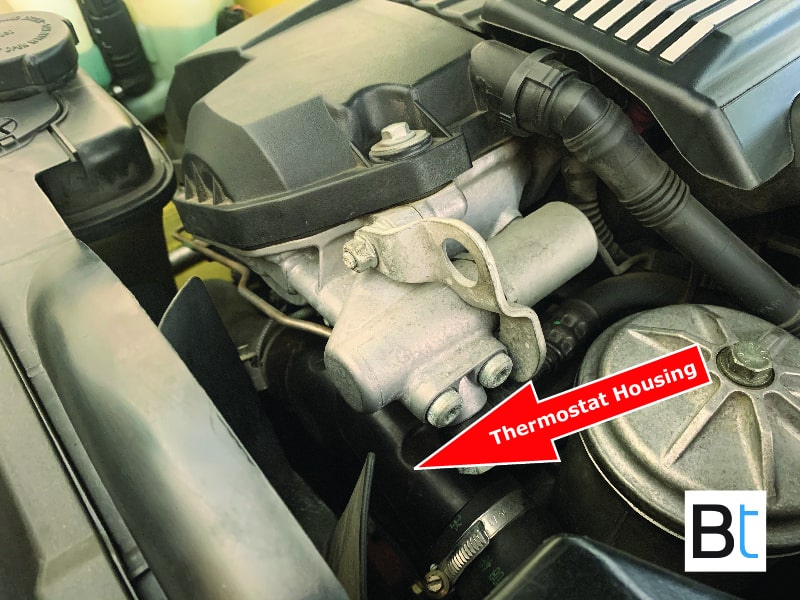
The cooling system on any BMW is critical to maintaining performance and longevity of your engine. Poor cooling maintenance will result in overheating and potentially do permanent damage to your vehicle. The thermostat is a critical part of engine cooling system. Below we will go over the basics of the thermostat’s role in engine cooling and how to know if your thermostat needs replacing.
What is the purpose of a car thermostat?
All modern BMW automotive engines are liquid-cooled. This means liquid (coolant) passes through the engine, extracting heat and then passing through the radiator to cool down and then pumped through the engine again to repeat the cycle. Maintaining an optimal engine operating temperature is critical for performance and reliability.
The thermostat is typically located in the front of the cylinder head inside a metal or plastic housing. The function of the thermostat is to open and close, allowing coolant to pass from the engine block to the radiator.
When you start your BMW after it has been sitting all night the thermostat is resting in the closed position. Coolant will remain inside the engine block until the engine reaches a predetermined temperature that opens the thermostat. This allows hot coolant to flow through the radiator for cooling and cycled back through the engine block. This system maintains a constant temperature of the engine to prevent overheating.

Even more, oil passing through your BMW’s engine block is also a form of liquid cooling. The oil pump transfers oil from the pan throughout the engine, extracting heat. Oil cycles back through your oil cooler completing the cycle.
How does it work?
Mechanically, the thermostat is a very simple device. A thermostat is essentially made up of a cylinder filled with wax and a spring-loaded piston attached to a valve. When the wax inside the cylinder begins to melt from being in contact with hot coolant, the wax expands pushing the piston outwards, opening the valve to allow coolant to now pass from the engine to the radiator. As the wax cools and contracts, the spring returns the piston to the closed position. In simpler terms, the thermostat acts as a gate to open and close at the calibrated moment necessary to regulate the flow of coolant passing through the engine block and radiator.

Symptoms of your BMW thermostat is not working?
Engine overheating
Check your coolant temperature gauge on your instrument cluster. Is the gauge reading more than halfway? is it near the red? This means your BMW engine is not being properly cooled. Although an overheating engine may be the result of many other issues, a faulty thermostat could be the culprit. A thermostat that stays closed and does not allow coolant to pass through the radiator will result in an overheating engine. This could catastrophically destroy your engine and lead to complete engine failure.
As a quick reference guide, engine overheating may be the result of a low coolant level, a faulty water pump, a leaking or clogged radiator, a warped thermostat housing or a broken head gasket. Although these are not all of the reasons, this lists the primary sources of an overheated engine.
Engine underheating
If a faulty thermostat remains closed and causes overheating, similarly, a faulty thermostat that remains open may result in engine underheating. Coolant which freely flows from the engine through the radiator will be too cool to maintain a temperature required to deliver optimal performance. Running an engine at too low of temperature for extended periods will not allow the oil to reach a viscosity level required to keep parts properly lubricated. Parts that insufficiently lubricated efficiently will result in premature engine wear.
On newer BMW models (such as the E46), an electrical connector is found on the thermostat housing. This connector powers a heater to melt the wax, allowing the computer to determine if it needs to allow coolant to flow or not. A 12-volt signal will be sent to the housing to heat the wax at the programmed time based off of existing driving conditions.
Overheating and Underheating
A faulty thermostat may not only fail in the open or closed position, but it may open and close at the wrong times. This will result in engine temperature fluctuations and an indication that your vehicle’s thermostat needs replacement.

The calibrated thermostat opens and closes at a certain temperature based on your engine’s specifications. Ensure the replacement thermostat operates in the temperature range your engine has been designed for.
How can you test a BMW thermostat?
Older style:
Thermostats found on older BMW models do not feature an electrical connection on the housing. These types can be easily tested by boiling a pot of water on the stove. As the temperature of the water increases, the thermostat should open in the exact way it does when installed on your BMW. You can visually detect if the valve is opening or closing before installed on your vehicle. If you have a thermometer, double-check the thermostat is opening at the correct temperature stamped on the part.
Newer style:
If your BMW’s thermostat housing has an electrical connector, you must bench test your thermostat with a 12v power supply. Simply apply two leads to the connector and verify the heater is working to allow the wax to expand and move the piston. When the power supply has been removed, ensure the piston fully retracts. The bypass valve should come in contact with the housing and create a seal, preventing coolant to flow.
If the thermostat has been proven to be faulty with either boiling water or through the power supply on the bench, replace the thermostat. They are reasonably inexpensive and not worth trying to repair.
How much does a BMW thermostat cost?
BMW thermostat prices will vary depending on the model. Generaly speaking older thermostats from the 1990s and earlier cost about $10 - $20 for an OEM equivalent. However, about $40 for a Genuine OEM BMW part. Thermostats with a built-in electrical heater will cost around $48 for an OEM equivalent and about $105 for a Genuine BMW part.
Ensure to replace housing gasket as well as the sealing o-ring that goes around the thermostat. Typically, this o-ring is usually included in the replacement part box. If the gasket does not come with the replacement thermostat they will cost about $3.
Further reading on BMW Fun Facts.



